It's all about the classical music composers and their works from the last 400 years and much more about music. Hier erfahren Sie alles über die klassischen Komponisten und ihre Meisterwerke der letzten vierhundert Jahre und vieles mehr über Klassische Musik.
Total Pageviews
Sunday, March 19, 2023
Thursday, March 16, 2023
Why ‘All By Myself’ sounds uncannily like Rachmaninov’s Piano Concerto No.2
By Siena Linton
How did Sergei Rachmaninov snag a songwriting credit for a pop ballad written decades after his death? The answer lies in his enduringly popular Piano Concerto No.2...
Eric Carmen’s 1975 smash hit, ‘All By Myself’, features an unlikely collaborator on its list of songwriters. The great Russian composer Sergei Rachmaninov, better known for his devilish piano works and rapturous symphonic writing, seemingly also turned his hand to power ballads, according to the record’s liner notes.
The catch? Rachmaninov had been dead for more than 30 years by the time the song was released.
A classically trained pianist, Carmen had been working on a new solo, writing four bars at a time. After roughly two months, he had a complete piano interlude – he just needed a song to put it in.
During his writing process, Carmen had been listening to Rachmaninov’s Piano Concerto No.2, and as he heard the evocative Romanticism of the second movement, inspiration struck.
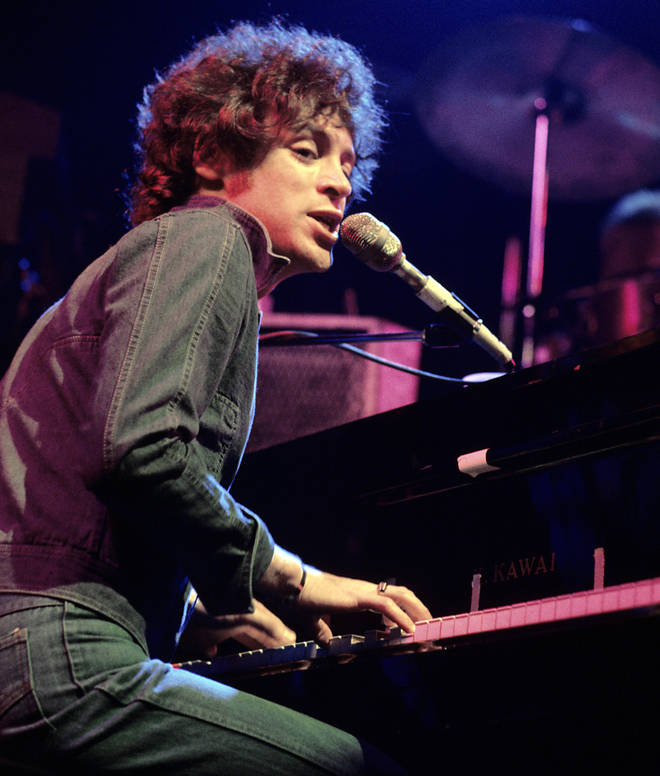
Rachmaninov’s melody is passed between the piano, flute, and clarinet in his piano concerto, and Carmen used it as the basis for the tune of his verse for ‘All By Myself’.
Using Rachmaninov’s harmonically meandering theme also meant Carmen had to incorporate similar chord patterns beneath his pop melody. It’s an unusual musical feature to hear in a pop song, and one that requires a skilled songwriter, such as Eric Carmen or Sergei Rachmaninov, to pull off.
The trouble was that although Rachmaninov’s music was in the public domain (meaning that copyright laws no longer applied to it) in the United States, that wasn’t necessarily the case in other parts of the world.
After the album’s release, Carmen was contacted by the Rachmaninov estate and together they agreed that, alongside a songwriter credit for Rachmaninov himself, the estate would also receive a 12 percent share of the royalties made from the song.
And so it was that the great Russian composer Sergei Rachmaninov came to add ‘chart-topping power ballad’ songwriter to his CV – and had one of his works performed by the one and only Celine Dion.
Wednesday, March 15, 2023
TOP 5 Touching Songs - The Maestro & The European Pop Orchestra
Tuesday, March 14, 2023
Pietro Mascagni (1863-1945) -His Music and His Life
Pietro Mascagni (1863-1945)
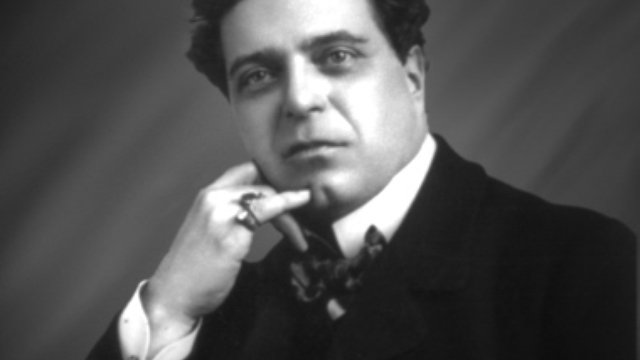
Biography
Life and Music
Mascagni’s father, a baker, wanted him to become a lawyer, but his uncle enabled him to study music.
Mascgani’s wife can take credit for ensuring the success of Cavalleria Rusticana early on – she entered it into a competition for a one-act opera held by the publisher Sonzogno in 1888. It won and, following a production in Rome, it was soon performed all over the world.
Mascagni enjoyed considerable success during his lifetime, but unfortunately today he is known almost solely for Cavalleria Rusticana.
In fact he wrote 15 operas, an operetta, orchestral, vocal and piano music.
Mascagni conducted orchestral music and opera, and conducted at La Scala for a while in the 1930s.
Did you know?
Cavalleria Rusticana is short, and so today it is usually performed with Leoncavallo’s opera Pagliacci.
MASCAGNI CAVALLERIA RUSTICANA INTERMEZZO - Lucca Philharmonic
TOP FILIPINO AUDITIONS THAT SHOCKED THE WORLD | UNBELIEVABLE
Monday, March 13, 2023
Rachel Portman (The Music of) Suite ~
Sunday, March 12, 2023
Matt Monro - Portrait Of My Love / Walk Away / Born Free
Khatia Buniatishvili - Rachmaninov: Variation 18 from "Rhapsody on a Theme
Dorina Santers - Goodbye My Love Goodbye (Full Video HD)
Concierto de Aranjuez - Joaquín Rodrigo | SSO | Bokyung Byun, guitar
Nicknamed Compositions by Johann Sebastian Bach
By Hermione Lai
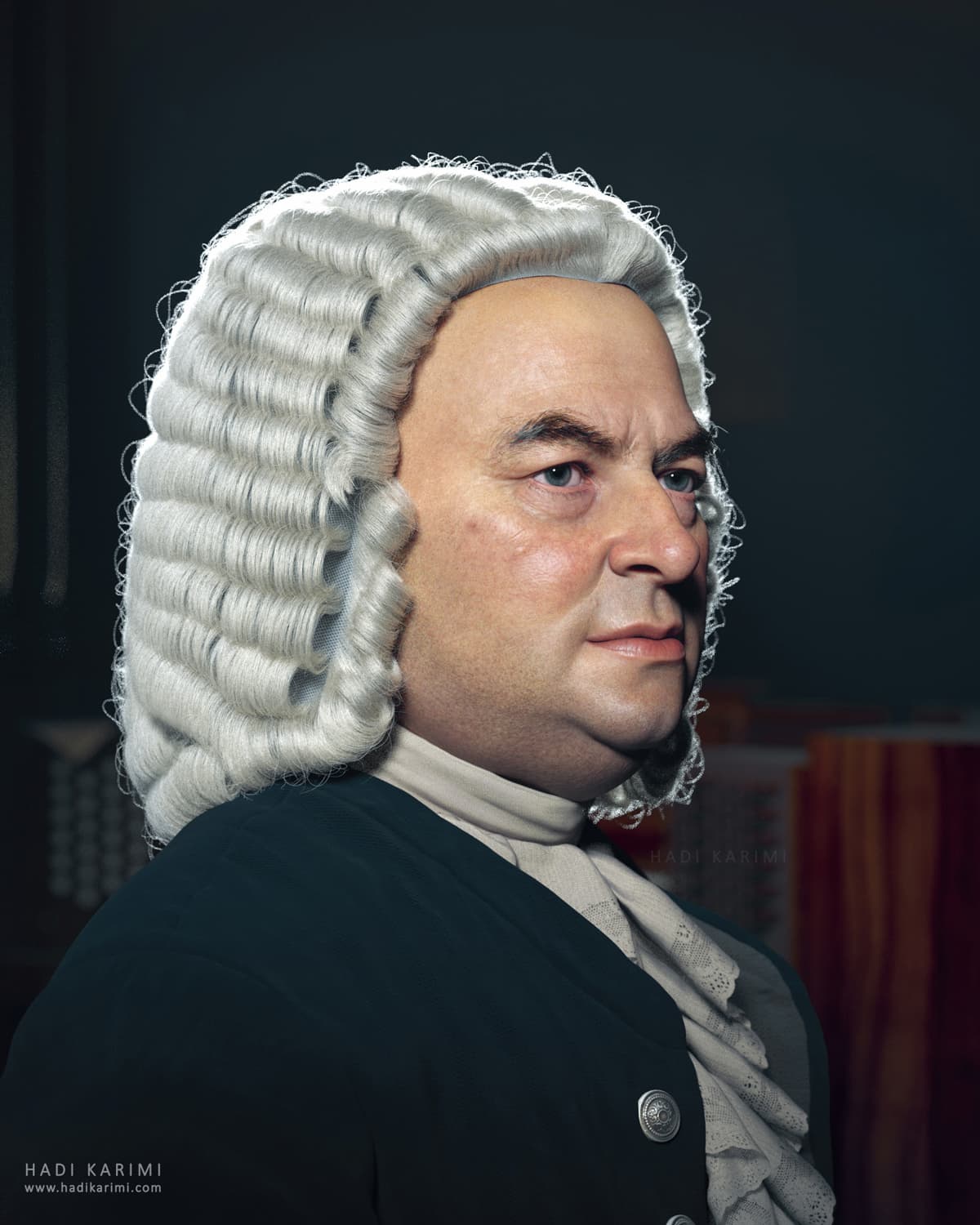
3D portrait of J.S. Bach by Hadi Karimi
For most of his life, Bach was insanely busy with work. But let’s not forget that during his two marriages, he sired twenty children and that his son Carl Philipp Emanuel called his father’s household in Leipzig a “pigeon coop.” An eminent musician and scholar writes, “Bach had normal flaws and failings, which makes him very approachable. But he had this unfathomably brilliant mind and a capacity to hear music and then to deliver music that is beyond the capacity of pretty well any musician before or since.” I suppose this means that Bach was a highly practical and well-organized individual and that he did not really take the time to give nicknames to the majority of his more than 1,000 compositions. Scholars, critics, or the circumstances of composition, as we have already seen with Haydn, Mozart, Schubert, and Beethoven supplied many of these nicknames. Let’s get started with some nicknamed compositions by Johann Sebastian Bach.
The collection of six concertos for several instruments, better known as the “Brandenburg Concertos,” are some of the best orchestral compositions by Bach. In fact, they are arguably some of the best orchestral compositions of the entire Baroque era. That particular nickname does not come from Bach, but from the circumstance surrounding their composition. Bach was employed by Prince Leopold of Anhalt-Cöthen in 1719, and the Prince sent Bach to Berlin to try out and negotiate for a new harpsichord for the court.
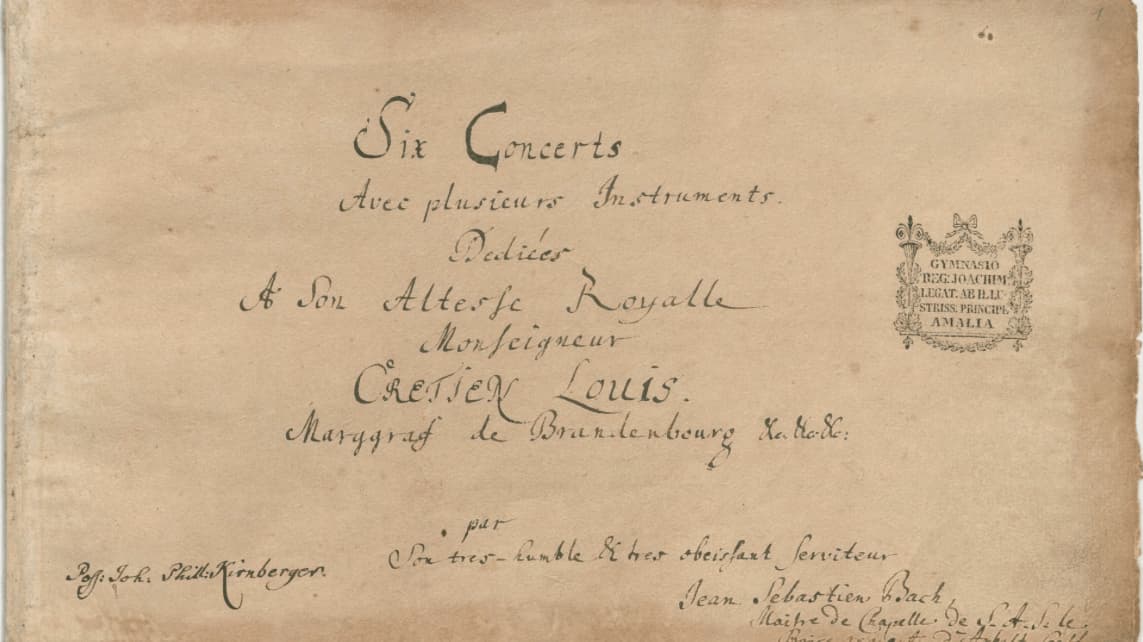
Title page of J.S. Bach’s Brandenburg Concerto
Once he had arrived, Bach informally played on a couple of instruments in the presence of Christian Ludwig, the Margrave of Brandenburg-Schwedt. Bach probably played some of his famous improvisations, and he was invited to send some compositions to the Margrave. Bach really did not take this commission seriously until two years later, when Prince Leopold sacked him for insubordination. Now that he had to look for employment elsewhere, he remembered the commission and he sent the Margrave six instrumental compositions. According to the composer “they were written to exploit the resources of Cöthen.” However, these resources did not seem to have been available to the Margrave of Brandenburg. As such, Bach received no thanks, no fees, and no employment offer.
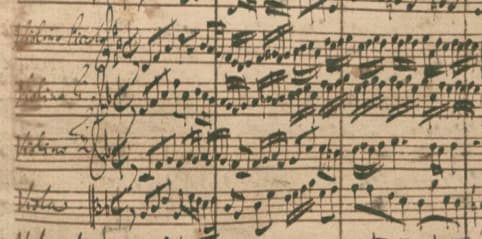
Manuscript of Bach’s Brandenburg Concerto
The autograph manuscript of the “Brandenburg Concertos” stayed in the Margrave’s library until his death in 1734, and it was then sold to the archives of the city of Brandenburg for the equivalent of 20 US dollars. Rediscovered only in 1849, the “Brandenburg Concertos” were first published in 1850. And we are very lucky to still have the autograph manuscript, as it was nearly destroyed by aerial bombardment during World War II. The unlikely hero turns out to have been a librarian, who hid the scores under his coat.
In 1715, Gottfried Zimmermann opened his famous café in Leipzig. Located in the most elegant street of Leipzig, Zimmermann began to host Friday evening concerts to attract customers. The Collegium Musicum founded by Georg Philipp Telemann started performances there in 1720, and by the time Johann Sebastian Bach moved to Leipzig in 1723, it had become a chic meeting place for the middle classes and gentlemen. “While single women were forbidden from frequenting the café, they could attend the public concerts.” Bach took over the “Collegium” concerts between 1729 and 1739, and the concerts held at the Zimmermann café lasted about two hours. The music consisted of German and Italian opera, chamber music, works for orchestra, and secular cantatas. Experts are unsure if Bach’s Schweigt stille, plaudert nicht (Be still, stop chatting,) BWV 211 was actually performed at this venue, but it certainly became highly popular under the nickname “Coffee Cantata.” It dates from 1735 and is a delicious mini-opera centered on a comic dispute between a father and his daughter and her coffee-drinking addiction. The heroine Aria just loves coffee, and she complains bitterly:
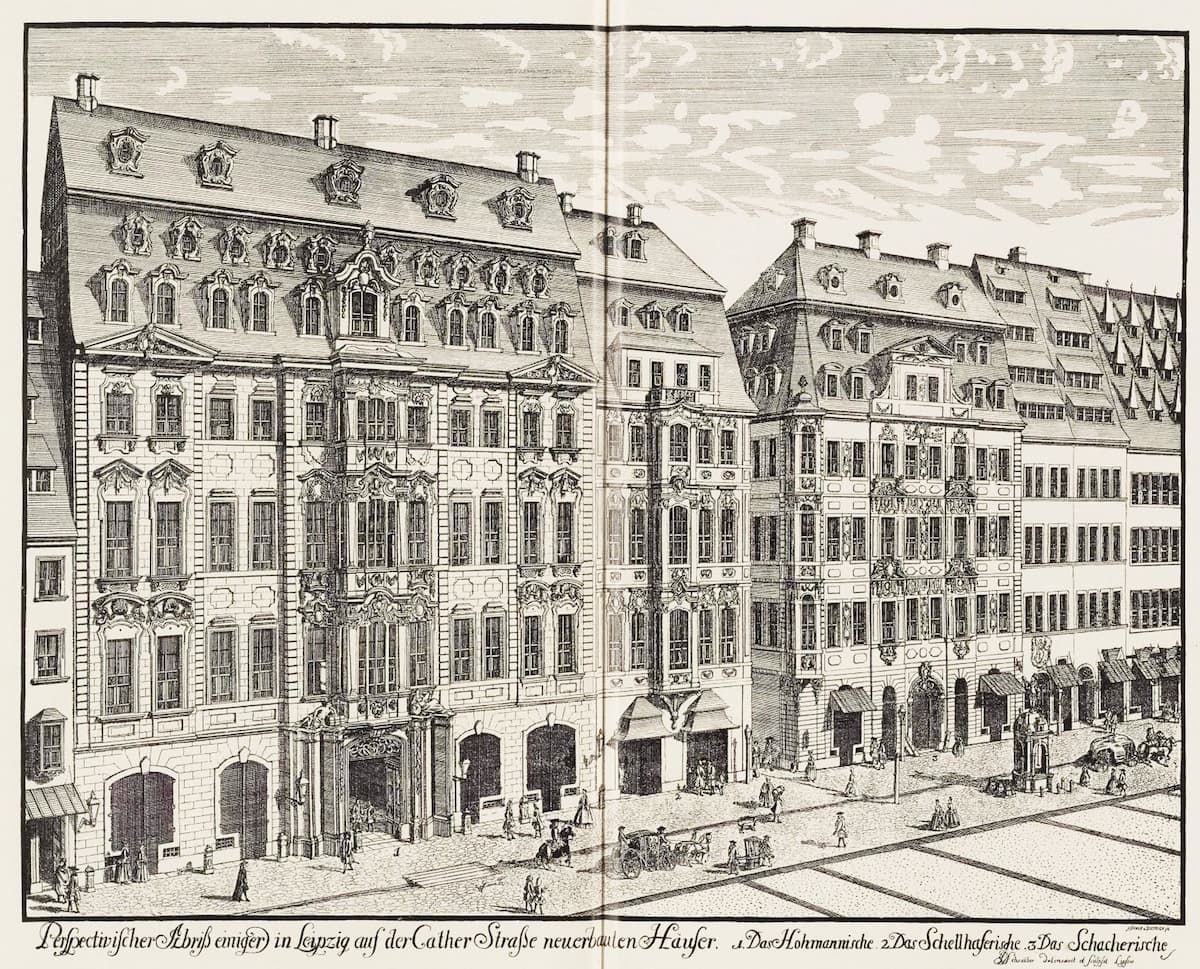
Café Zimmermann in Leipzig, 1720
Father sir, but do not be so harsh!
If I couldn’t, three times a day,
be allowed to drink my little cup of coffee,
in my anguish I will turn into
a shriveled-up roast goat.
Ah! How sweet coffee tastes,
more delicious than a thousand kisses,
milder than muscatel wine.
Coffee, I have to have coffee,
and, if someone wants to pamper me,
ah, then bring me coffee as a gift!
Father and daughter eventually reconcile, and the nickname “Coffee Cantata” might easily have originated during Bach’s day. As we can see, Bach wasn’t a mere workaholic; he also knew how to have fun.
In 1741, Johann Sebastian Bach published the 4th part of his “Keyboard Exercises” under the title “Clavier Übung bestehend in einer Aria mit verschiedenen Verænderungen vors Clavicimbal mit 2 Manualen.” Translated this simply means “Keyboard Exercise, consisting of an Aria with diverse variations for harpsichord with two manuals.” The first edition published by Balthasar Schmid in Nuremberg further states that it “was composed for connoisseurs, for the refreshment of their spirits.” Today every music lover knows this set simply under the name “Goldberg Variations.” Bach composed the work on commission from Herman Karl von Keyserlingk, the Russian ambassador to Saxony. Count Keyserlingk suffered from extended bouts of insomnia, and to ease his torment during the dark and long hours of the night, he instructed his private harpsichordist Johann Gottlieb Goldberg to play for him in the antechamber. Apparently, the Count once mentioned in Bach’s presence that he would like to have some clavier pieces for Goldberg. Goldberg was an exceptionally talented keyboard performer, and musicians marveled at his ability suggesting, “never there was anybody who was a stronger player.” While Goldberg was a phenomenal performer, the Bach biographer Nicolaus Forkel tells us that “he had no special talent for composition.”
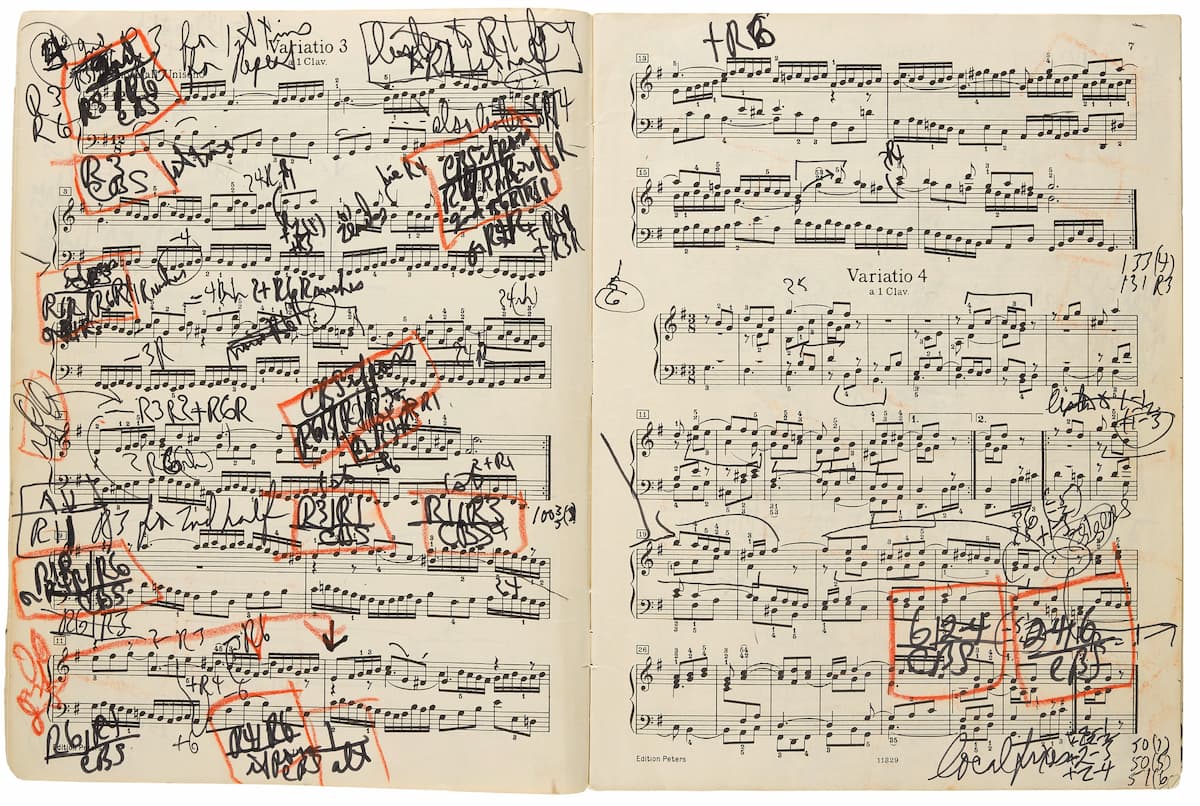
Glenn Gould’s markings on Bach’s Goldberg Variations
Since Count Keyserlingk was looking for pieces “which should be of such smooth and somewhat lively character that he might be a little cheered up by them in his sleepless nights,” Bach went to work and composed the variation set. He officially presented a copy of the first edition to Count Keyserlingk, and was rewarded with a golden goblet filled with 100 gold “Louis d’or,” a veritable fortune. Among the most sophisticated works ever written for keyboard, the Goldberg Variations are sublime and compassionate, graceful, warm, and relentlessly intricate. Nobody would dare to call them “Keyboard Exercises” today.
In his day, Johann Sebastian Bach was primarily known as a keyboard virtuoso. At the age of 23, he was appointed court musician in the chapel of Duke Johann Ernst in Weimar. He would only stay for seven months, but his reputation as a keyboard genius had already reached the town of Arnstadt, and he was quickly invited to inspect the new organ, and he gave the inaugural recital at Saint Boniface. His appointment as organist soon followed, but he was dissatisfied with the standards of the singers in the choir. So, when he was offered the position of organist at Saint Blasius in Mühlhausen, he quickly took up the invitation. His reputation as a performer continued to grow, and in 1708 he returned to Weimar as organist and concertmaster at the ducal court. Surrounded by professional musicians, Bach began to compose keyboard and orchestral works, including the preludes and fugues that would eventually make up his “Well-Tempered Clavier.”
In addition, the majority of his organ works were composed during his tenure in Weimar, and Bach performed them regularly in concerts at the court. Among Bach’s magnificent organ compositions, we find the Toccata and Fugue in D minor, BWV 538. This work is not to be confused with the Toccata and Fugue in D minor BWV 565, which has become a spooky Halloween favorite. In fact, BWV 538 carries the somewhat cryptic nickname “Dorian.” This particular nickname makes reference to one of the eight medieval church modes. If we were to play Dorian mode on a piano today, we would only use the white keys of the keyboard from D to D. And most importantly, there would be no key signature. And that is true of Bach’s “Dorian Toccata and Fugue,” as it is written without key signature. That means that the entire composition has an ancient modal, that is “Dorian” quality.
When Johann Sebastian Bach died on 28 July 1750, he left behind an incomplete musical work of unspecified instrumentation. The work consists of 14 fugues and 4 canons in D minor, and Bach scholars call it “an in-depth exploration of the contrapuntal possibilities inherent in a single musical subject.” It’s almost unbelievable, but Bach composed all these magnificent fugues and canon based on a single melody. This sounds simple, but it is in reality a highly complex process of rules and restrictions. Yet for the musical and expressive genius Johann Sebastian Bach, the possibilities within these restrictions were endless. He demonstrates every compositional technique and method known to him, but sadly the collection remained unfinished. While weaving his musical signature B-A-C-H into a 4-voice triple fugue on three subjects, Bach died. Today, The Art of the Fugue “stands as not only the ultimate monument to his own wide-ranging genius but an enduring shrine to the art of an entire epoch. Yet it is no dry memorial. Although incomplete, quixotic, and partly abstract, it has attracted, challenged, and enthralled musicians, scholars, and listeners of every era.”
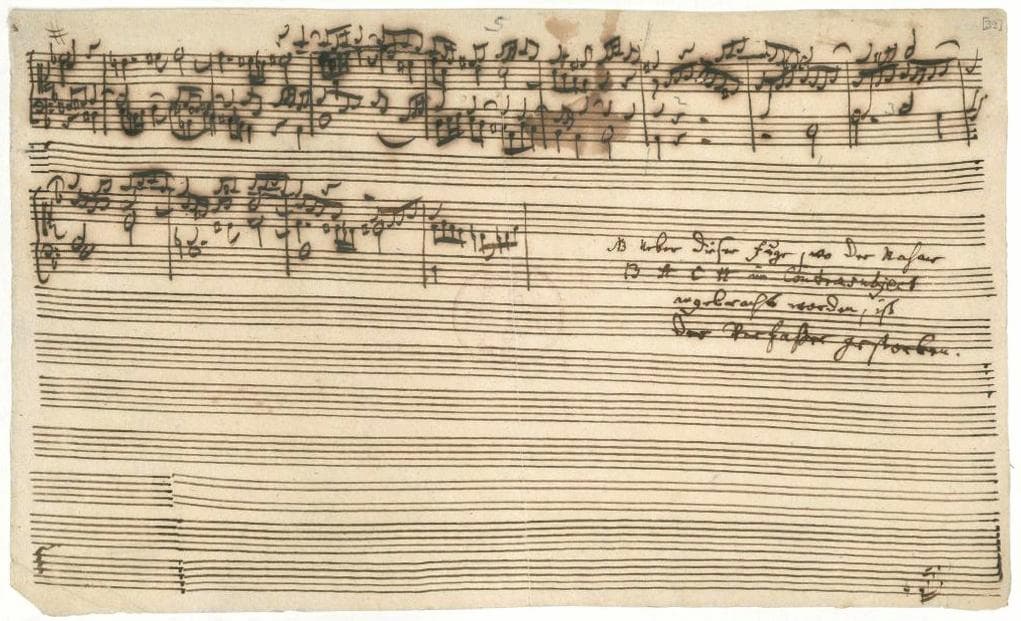
Bach’s unfinished fugue
We don’t exactly know why Bach started this collection at the end of his life, but it was written during a time when the musical style was undergoing a fundamental change. Counterpoint was being phased out in favor of an emerging homophonic style. As a Bach supporter wrote, “one very soon becomes tired of insipid little ditties that consist of nothing but consonances,” and a respected theorist praised the Art of the Fugue “as a bulwark against contemporary rubbish.” It seems that Bach wanted to make a musical statement, but what about the title? The earliest manuscript shows the following inscription on the title page, “Die Kunst der Fuga di Signore Joh. Seb. Bach.” However, that title page was written by Bach’s son-in-law Johann Christoph Altnickol. Did Bach dictate that particular title to Altnickol, or was that title common currency or simply a pointed nickname?
Johann Sebastian Bach, as we have already seen with the “Goldberg Variations,” wrote and published four sets of works under the title “Keyboard Exercises.” The third set, probably composed in 1739 opens with a huge Prelude in E-flat major followed by 21 chorale preludes, four duets, and a closing Fugue in E-flat major. As such, the prelude and fugue are not actually connected to each other. This only changed when Felix Mendelssohn told everybody that they should be performed as a single Prelude and Fugue in E-flat major.
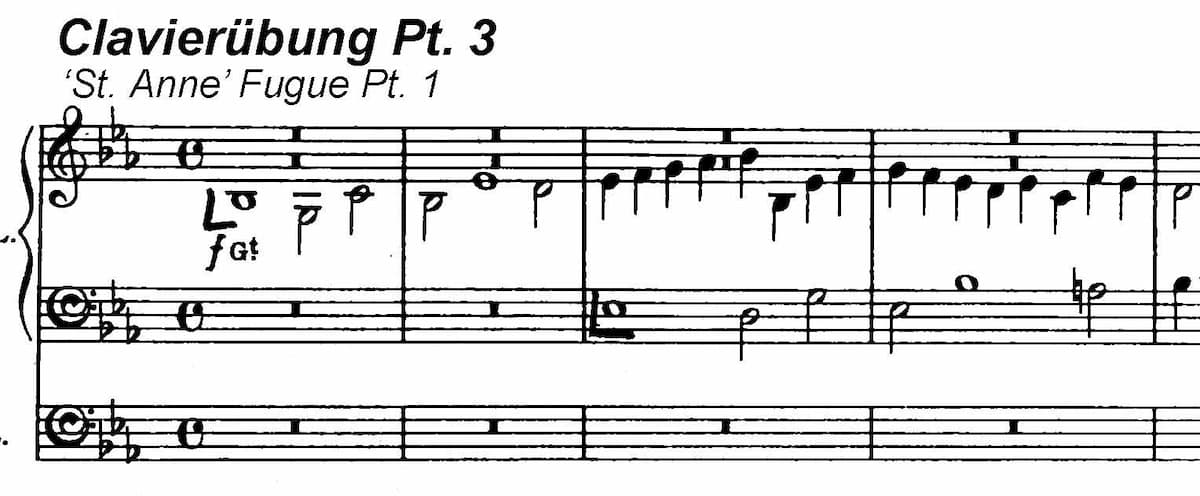
Bach’s fugue “St. Anne”
The prelude is one of the largest organ pieces that Bach ever wrote, and the fugue features three subjects based on a common theme. That theme is similar in melody to William Croft’s hymn tune “O God our Help in ages past.” It is doubtful that Bach ever knew that particular hymn tune, but the nickname “St. Anne” for the E-flat fugue, attached in the 19th century, has stuck.
Let us stick to Bach’s “Keyboard Exercises” for our concluding example. The second part was published in 1735, and on the title page we read, “Keyboard Exercises consisting in a Concerto after Italian Taste and an Overture after the French Manner for a Harpsichord with Two Manuals, composed for Music Lovers, to Refresh Their Spirits, by Johann Sebastian Bach, Kapellmeister to His Highness the Prince of Anhalt-Cöthen and Director Chori Musici Lipsiensis.” Since Bach essentially composed a solo concerto in Italian style, the nickname “Italian Concerto” is not far-fetched.
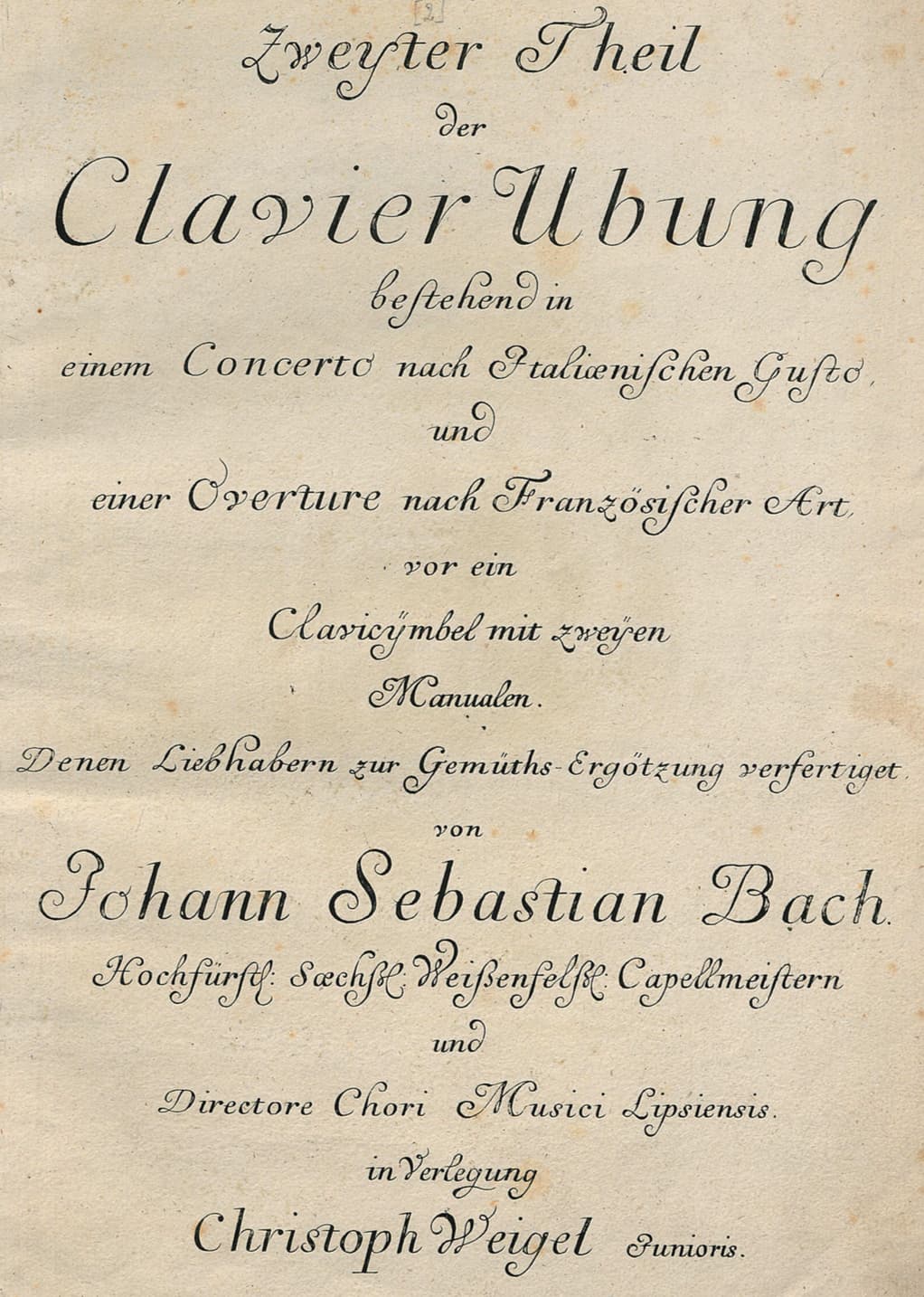
Title page of Bach’s Keyboard Exercises Part 2
Even one of Bach’s greatest critics openly admired this work and wrote in 1739, “Finally I must mention that concertos are also written for one instrument alone…There are some quite good concertos of this kind, particularly for clavier. But pre-eminent is a clavier concerto of which the author is the famous Bach in Leipzig. Who is there who will not admit at once that this clavier concerto is to be regarded as a perfect model of a well-designed solo concerto? It would take as great a master of music as Mr. Bach provided us with such a piece, which deserves emulation by all our great composers and which will be imitated all in vain by foreigners.” Bach specified that the “Italian Concerto was to be performed on a two-manual harpsichord. In that way, he provides clear indications for softs and louds, for the keyboard interaction between the soloist and orchestra, and how the concerto was to unfold.

